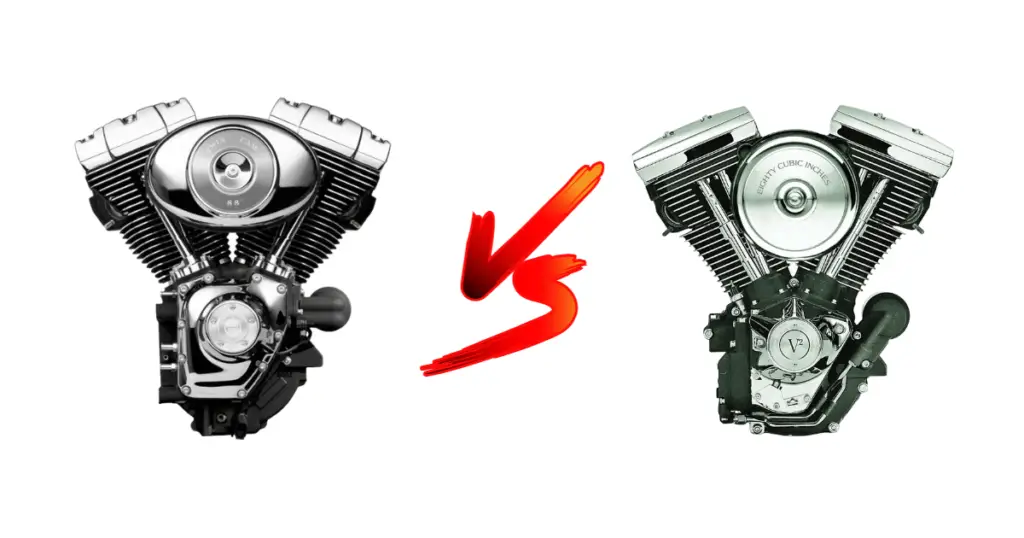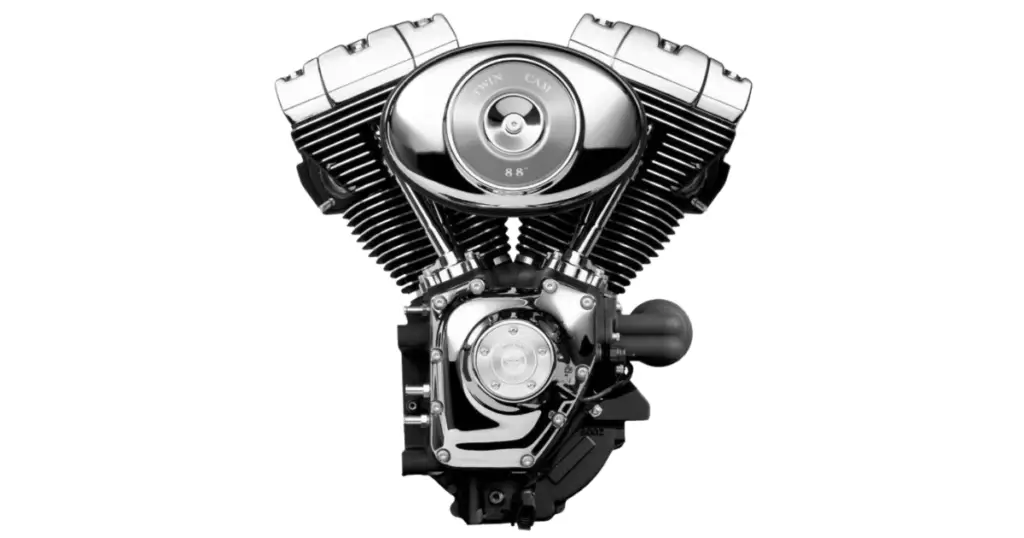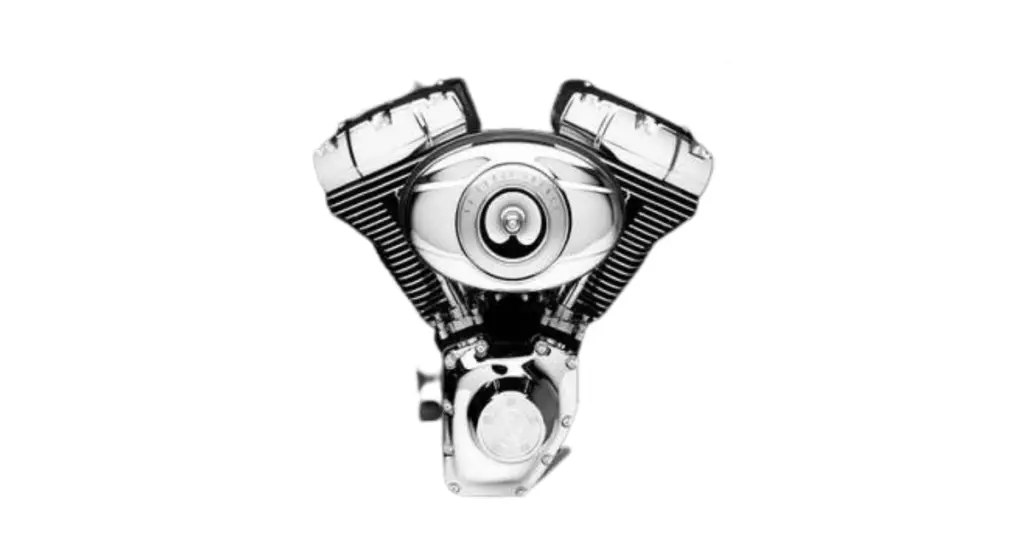Ah, the great debate: Harley Twin Cam 88 vs 96. Both have made their mark on Harley-Davidson’s noteworthy heritage, but the question lingers — which one truly owns the road?
As experienced two-wheel connoisseurs, we understand the importance of an efficient and reliable engine. Your Harley is more than a motorcycle; it’s an extension of you, your personality and your proclivity for power. Therefore, settling on an engine boils down to more than just numbers.

The Twin Cam 88, revered for its introduction in Harley’s 1999 lineup, quickly became a classic. Its reliability shaped countless road-trips and weekday commutes. However, just seven years later, the Twin Cam 96 entered the scene promising improved power and performance.
But, how do these legendary engines measure up side by side? “Is the Twin Cam 88 reliable?” you ask. “What about the Twin Cam 96’s reliability? Which is better from the Harley 88 vs 96?” These questions are more common than you think, leading to endless forum debates and coffee shop discussions.
We’ve tailored our research and expertise to your curiosity, unpacking the nuances and horsepower-hurling specifics of each engine. Buckle up, as we delve deep into the dual cam shootout. And remember – whether it’s an 88 or a 96, it doesn’t just have to perform, it should resonate with you. After all, it’s not just an engine; it’s your ride. Enjoy the rumble and let’s get rolling.
Read later:
– Finding Best Oil for Harley Davidson Twin Cam Engines (Guide)
– Best Spark Plugs for Harley Davidson Twin Cam: Full Guide
Twin Cam 88 Overview

The Harley Davidson Twin Cam 88, also known as the TC88, was first introduced in 1999, and it soon became a popular choice among Harley enthusiasts. It represented a significant upgrade from the previous Evolution engine, providing more power and smoother operation.
Performance Stats
The TC88 has a displacement of 1450cc, or 88 cubic inches, hence the name. It features a V-twin four-stroke configuration, producing a maximum torque of 82 ft-lbs at 3500 rpm. This torque ensures a powerful and smooth ride, especially at higher speeds.
What Kind of Transmission Did The TC88 Use?
The Twin Cam 88 engine typically had a 5 speed transmission. The 5 speed transmission was well-regarded for its reliability and smooth shifting, complementing the performance characteristics of the Twin Cam 88 engine.
How Much Horsepower Does A Twin Cam 88 Have?
The TC88 engine generates around 63-67 horsepower, depending on the specific model and any aftermarket modifications. This level of horsepower provides a balance between power and fuel efficiency, making it a practical choice for everyday use.
What CC is 88 Cubic Inches?
In terms of cubic centimeters (CC), the 88 cubic inch displacement of the TC88 translates to approximately 1442cc. This engine size is considered mid-range, offering a balance of power and fuel efficiency.
Is The Twin Cam 88 A Good Motor?
The TC88 has earned a reputation as a reliable and robust engine. It offers a smooth ride and enough power for most riders. The engine is also known for its longevity, with proper maintenance and care.
You should also know: Twin Cam 88 Oil Capacity (Fully Explained + Primary)
Is The Twin Cam 88 Reliable?
Yes, the Twin Cam 88 is generally considered reliable. With regular service and maintenance, these engines can last for hundreds of thousands of miles. In many cases, I recommend upgrading the cam chain tensioner to prematurely address any potential issues down the line.
Related: Harley Davidson Twin Cam 88 Cam Chain Tensioner Upgrade Cost
Did The TC88 Have Any Common Problems?
The Harley-Davidson TC88 engine had some common problems, including:
- Cam Chain Tensioners: Early models had plastic tensioners prone to wear.
- Oil Leaks: Gasket leaks from base and rocker boxes were reported.
- Transmission Issues: Problems like false neutrals and clunky shifting occurred.
- Crankshaft Runout: Some engines had excessive runout, leading to vibrations.
- Electrical Issues: Stator and regulator/rectifier failures caused charging problems, and the TC88 occasionally experience electric-related fuel injection problems
- Engine Noise: Some engines were noisy, with knocking or ticking sounds.
- Roller Bearing Issues: In many cases, the roller bearing used as the inner bearing of the crankshaft was prone to failure. Typically in high mileage or modified engines.
- Rocker Arm Bearing Failure: some riders reported the bearings in the rocker arms would wear out prematurely. this was typically due to the stress and heat generated in the engine.
How Long Does The Twin Cam 88 Last?
The lifespan of a Twin Cam 88 engine largely depends on how it’s maintained and ridden. With regular service and responsible riding, these engines can easily cover over 100,000 miles. However, it’s worth noting that the 88ci Twin Cam does suffer from premature cam chain tensioner failure, like many other twin cam engines.
Twin Cam 96 Overview

The Harley Davidson Twin Cam 96, or TC96, was introduced in 2007 as an upgrade to the TC88. It features a larger displacement and more advanced technology, resulting in improved performance and power.
Performance Stats
The TC96 has a displacement of 1584cc, or 96 cubic inches. Like its predecessor, it is a V-twin four-stroke engine, but it produces up to 93 ft-lbs of torque at 3500 rpm. This increased torque provides a noticeable improvement in acceleration and pulling power.
You should also know:
– Harley 96 Oil Capacity (The Full Explanation)
– Harley 96 Primary Oil Capacity (The Full Explanation)
What Kind of Transmission Did The 96 Use?
the Twin Cam 96 engine was paired with a 6 speed transmission. This upgrade to a 6 speed gearbox provided an additional overdrive gear, which improved highway cruising comfort, reduced engine RPM at higher speeds, and enhanced overall fuel efficiency.
How Much Horsepower Does A Twin Cam 96 Have?
The TC96 engine generates around 66-70 horsepower, depending on the specific model and any aftermarket modifications. This represents a modest increase in horsepower compared to the 88 engine.
Related:
– Harley 96 vs 103: What’s The Deal?
– Harley 96 vs 107: Performance, Upgrades, and More
What CC is 96 Cubic Inches?
The 96 cubic inch displacement of the TC96 equates to around 1573cc. This larger engine size provides more power and torque, making it a more potent choice for riders who crave performance.
Is The Twin Cam 96 A Good Motor?
Yes, the Twin Cam 96 is generally considered a good engine. It offers enhanced performance, more power, and smooth operation. It also incorporates several design improvements over the 88 engine, which contribute to its reliability and longevity.
See next: Best Tuner for Harley 96: Power, Torque, and More
Is The Twin Cam 96 Reliable?
The TC96 is reliable, with a good track record of performance and durability. However, like any engine, it requires regular maintenance and service to stay in top condition.
Did The TC96 Suffer Any Common Problems?
The TC96 suffered (occasionally) all of the same problems as the TC88, but a few new problems arrived upon its release:
- Exhaust Heat: The Twin Cam 96 engines were known to generate more heat than the Twin Cam 88, making the riding experience less comfortable, especially in hot weather.
- Oiling System Issues: Some Twin Cam 96 engines encountered unique oil-related problems, despite design improvements in the oiling system over the Twin Cam 88. Unrelated to the oil pump issues coming from a failing cam chain tensioner, found in most TC engines.
Related: Dreaded Twin Cam 96 Problems (Too Much To Handle?)
How Long Does The Twin Cam 96 Last?
With proper maintenance and care, a Twin Cam 96 engine can last for well over 100,000 miles. However, the exact lifespan will depend on factors such as riding style, maintenance routine, and the specific model of the bike. However, like the 88ci Twin Cam, the Twin Cam 96 suffers from primary cam chain tensioner failure in some cases.
Now, lets expand the comparison: Harley 88 vs 96 vs 103: An In-Depth Engine Comparison
Which Would I Choose Between The Harley 88 and 96?
Choosing between the Twin Cam 88 and 96 largely depends on personal preference and riding needs. Some riders may argue that they’re essentially the same engine, but I can confidently say they are not. If you prioritize power and performance, the TC96 might be the better choice, thanks to its larger displacement and increased torque.
Why?
The TC96 offers more power and torque, making it a better choice for riders who frequently travel at high speeds or carry heavy loads. Additionally, the TC96 features several design enhancements over the 88 engine, which may contribute to improved reliability and longevity.
Which Engine Is Most Reliable?
Both the TC88 and TC96 are reliable engines with a proven track record of performance and longevity. However, the TC96 has a slight edge in terms of technological advancements and design improvements, which may contribute to better reliability over time.
Which Engine Is Cheapest?
The 88 engine, being an older model, can often be found at a lower price point than the TC96, especially when considering used motorcycles. However, the cost can vary significantly depending on factors like the bike’s age, mileage, condition, and any aftermarket modifications.
Conclusion & Recap of Main Points
In conclusion, both the Twin Cam 88 and 96 are excellent choices, each with their own strengths. The 88 engine offers reliable performance and is a cost-effective option, while the TC96 provides enhanced power and torque, along with several design improvements. Ultimately, the choice between the two will depend on your personal preferences and riding needs.
Read next:
> Twin Cam vs Milwaukee 8: Harley Motor Shootout
> Harley’s Twin Cam vs Evo: Who Reigns Supreme? (Revealed)